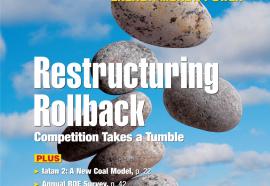Hybrid Finance
A solution to high electricity prices in restructured states.
New baseload generation is needed in many areas of the United States, but financing new plants will be particularly challenging in restructured states where generation facilities are no longer included in rate base and therefore not financed through the traditional rate-of-return paradigm. A market hybrid approach—in which new baseload plants would be partially owned and financed by the regulated distribution company with the other portion owned and financed by the unregulated generation company—would combine the advantages of lower cost capital and regulatory oversight associated with traditional rate of return regulation, with the cost control and efficiency associated with competitive markets.











